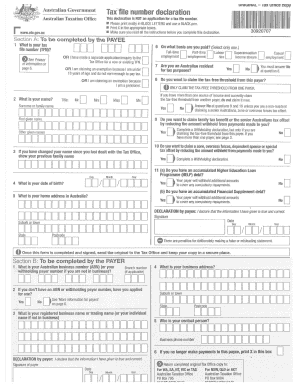Fill and Sign the Tax Declaration Form 243830547

Useful advice on creating your ‘Tax Declaration Form 243830547’ online
Are you fatigued by the inconvenience of managing paperwork? Look no further than airSlate SignNow, the leading eSignature solution for both individuals and organizations. Bid farewell to the lengthy procedure of printing and scanning documents. With airSlate SignNow, you can easily complete and sign documents online. Utilize the robust features bundled within this user-friendly and cost-effective platform and transform your method of document management. Whether you need to sign forms or collect eSignatures, airSlate SignNow manages it all effortlessly, needing only a few clicks.
Adhere to this comprehensive guide:
- Sign in to your account or register for a complimentary trial with our service.
- Click +Create to upload a file from your device, cloud storage, or our form repository.
- Access your ‘Tax Declaration Form 243830547’ in the editor.
- Click Me (Fill Out Now) to prepare the document on your behalf.
- Add and designate fillable fields for others (if needed).
- Proceed with the Send Invite options to solicit eSignatures from others.
- Save, print your copy, or convert it into a reusable template.
Don’t fret if you require to work with your colleagues on your Tax Declaration Form 243830547 or send it for notarization—our platform provides all you need to achieve such tasks. Register with airSlate SignNow today and elevate your document management to a new level!
FAQs
-
What is a Tax Declaration Form and why do I need it?
A Tax Declaration Form is an official document that individuals or businesses file to report their income and expenses to tax authorities. It's crucial for ensuring compliance with tax regulations and determining your tax liability. Using airSlate SignNow, you can easily eSign and send your Tax Declaration Form securely and efficiently.
-
How can I complete my Tax Declaration Form using airSlate SignNow?
To complete your Tax Declaration Form with airSlate SignNow, simply upload the document to our platform, fill in the necessary details, and use our eSignature feature to sign it digitally. This process ensures that your form is completed accurately and submitted on time, saving you both time and hassle.
-
Is there a cost associated with using airSlate SignNow for my Tax Declaration Form?
Yes, airSlate SignNow offers various pricing plans to cater to different business needs. Our pricing is competitive and designed to provide a cost-effective solution for managing your Tax Declaration Form and other documents. You can choose a plan that suits your usage requirements and budget.
-
What features does airSlate SignNow offer for managing Tax Declaration Forms?
AirSlate SignNow provides a range of features for managing your Tax Declaration Form, including customizable templates, eSignature capability, document sharing, and secure storage. These features streamline the entire process of handling tax forms, making it easier for you to stay organized and compliant.
-
Can I integrate airSlate SignNow with other software for my Tax Declaration Form?
Absolutely! airSlate SignNow offers integrations with popular software applications such as Google Drive, Salesforce, and Microsoft Office. This allows you to seamlessly manage your Tax Declaration Form alongside other business processes and improve your overall workflow.
-
How secure is my Tax Declaration Form when using airSlate SignNow?
Security is a top priority at airSlate SignNow. We implement advanced encryption protocols and compliance measures to protect your Tax Declaration Form and any sensitive information it contains. You can trust that your documents are safe and secure while using our platform.
-
What are the benefits of using airSlate SignNow for my Tax Declaration Form?
Using airSlate SignNow for your Tax Declaration Form offers numerous benefits, including time-saving document management, easy eSigning, and enhanced collaboration. Our user-friendly platform simplifies the process and ensures that you can focus on your business instead of paperwork.
Related searches to tax declaration form 243830547
Find out other tax declaration form 243830547
- Close deals faster
- Improve productivity
- Delight customers
- Increase revenue
- Save time & money
- Reduce payment cycles

